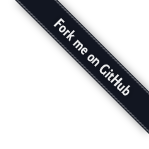Classic ox-html allows setting table attributes directly using
#+attr_html. But specifying the attributes directly in the <table>
tag is admonished in HTML5 .. and so Hugo/Blackfriday do not allow
any way to directly insert attributes inside the <table> tag.
So a workaround is used by ox-hugo.. it wraps the tables with <div>
tags with classes, which a user can then use to style the tables using
CSS.. just as recommended by HTML5 😄.
ox-hugo can style different tables in different ways on the same
page, with the help of #+attr_html and #+attr_css (introduced in
ox-hugo) attributes.
-
#+attr_htmlis used to assign one or more classes to a table.#+attr_html: :class sane-table- Wraps the table in
<div>tags withsane-tableclass. - Sets style from
#+attr_css, if present, for.sane-table tablescope.
or
#+attr_html: :class zebra-striping sane-table- Wraps the table in
<div>tags withzebra-stripingandsane-tableclasses. - Sets style from
#+attr_css, if present, only for the.zebra-striping tablescope i.e. only for the first class listed in that attribute. Specifying multiple classes to a table is useful if you want that table to inherit the styling from CSS rules for multiple classes.
- Wraps the table in
-
#+attr_cssis used to assign the specified styles to the class of the table it precedes.Examples:
#+attr_css: :width 80%#+attr_css: :text-align left- If
#+attr_htmlis used to specify the table class, the style is applied to the first of the list of classes (as explained above). - If
#+attr_htmlis not used to set a custom class name for the table, the class name is auto-derived..- If the table
#+captionis present, the class name istable-Nwhere “N” is the Nth captioned table on that page. - If the table is not captioned, the class name is always
table-nocaption. So.. if you want to have different styling for different tables, make sure that you either set their custom class name using#+attr_html, or caption them.
- If the table
- If
-
All tables exported with the
<div>tags have the classox-hugo-table. This can be useful if you want to set a common style for all those tables. -
#+attr_cssapplies styling only to the.CLASS tablescope. So if you want more styling i.e. for other elements liketd,tr, etc, you would need to do that in an#+export_begin htmlblock.Example:
#+begin_export hugo <style> .my-table th, .my-table td { padding: 20px; text-align: left; } </style> #+end_export #+caption: Table with verbatim CSS #+attr_html: :class my-table | h1 | h2 | h3 | |-----+-----+-----| | abc | def | ghi |
You can find many examples of table styling here:
| Org Source | Exported Markdown | Hugo HTML |
|---|---|---|
all-posts.org – search for * Table Styling or :EXPORT_FILE_NAME: table-styling |
table-styling.md | Hugo output |
Credit: Guide to styling tables in HTML5-friendly manner — css-tricks.com
Hiding table caption numbers #
The “Table <number>:” part of the table captions can be hidden by adding this to the CSS:
.table-number {
display: none;
}
